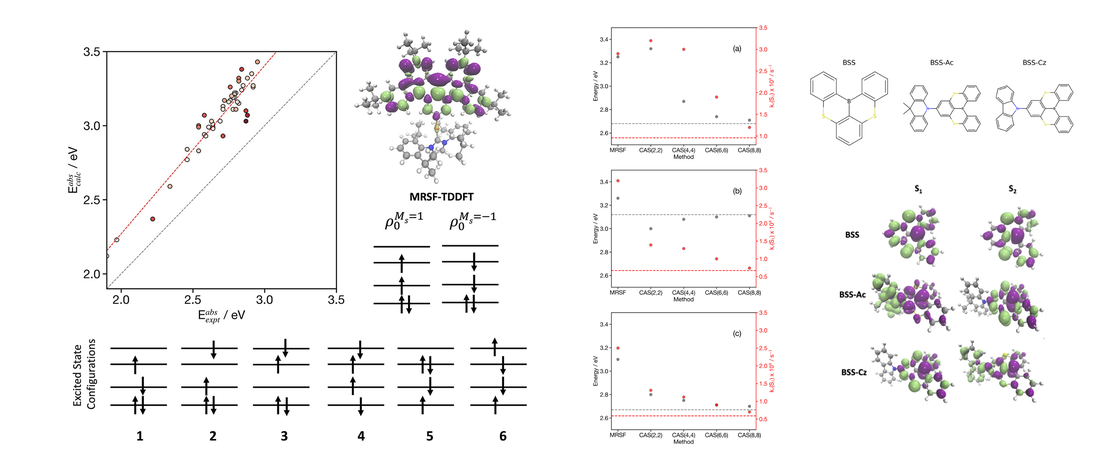
Towards the accurate simulation of multi-resonance emitters using mixed-reference spin-flip time-dependent density functional theory
- Shawana Ahmad, Julien Eng and Thomas J. Penfold
- Publication
- September 12, 2024
Abstract:
Multi-resonant Thermally Activated Delayed Fluorescent (MR-TADF) materials have received significant research interest owing to their potential use as emitters in high-performance Organic Light Emitting Diodes (OLEDs). Despite their advantages, including narrow emission spectra leading to high colour purity, several challenges remain in optimising the performance of these materials. One key issue is the typically long delayed fluorescence lifetime which arises from a large gap and weak coupling between the lowest lying singlet and triplet states. To develop high-performing materials, in silico design is an important step and consequently it is crucial to develop and deploy computational methods that accurately model their excited state properties. Previous studies have highlighted the importance of double excitations, which are not accounted for within the framework of Linear Response Time-Dependent Density Functional Theory (LR-TDDFT), contributing to the poor performance of this method for these materials. Consequently, in this work, we employ Mixed-Reference Spin-Flip Time-Dependent Density Functional Theory (MRSF-TDDFT) to calculate the properties of MR-TADF materials. Our findings indicate that this approach accurately predicts the excited state properties including the crucial ΔEST, the energy difference between the lowest singlet (S1) and triplet (T1) excited states. We further use this method to explore the excited state properties of systems designed to enhance the coupling between singlet and triplet states by increasing the density of states and enhancing spin–orbit coupling through metal perturbation. The results in this work sets the foundation for computationally efficient in silico development high-performing MR-TADF materials within the framework of MRSF-TDDFT.
Additional Resources
DOI: 10.1016/j.orgel.2024.107138
Bibtex:
@article{ahm24towards,
title = {Towards the accurate simulation of multi-resonance emitters using mixed-reference spin-flip time-dependent density functional theory},
journal = {Organic Electronics},
volume = {135},
pages = {107138},
year = {2024},
issn = {1566-1199},
doi = {https://doi.org/10.1016/j.orgel.2024.107138},
url = {https://www.sciencedirect.com/science/article/pii/S1566119924001496},
author = {Shawana Ahmad and Julien Eng and Thomas J. Penfold},
keywords = {OLEDS, Multi-resonance, TADF, MRSF-TDDFT},
}


